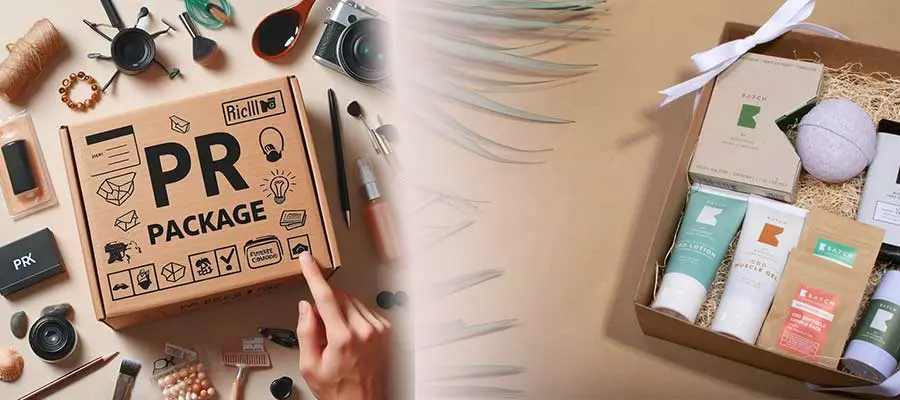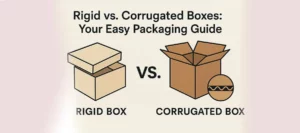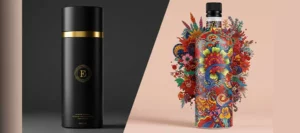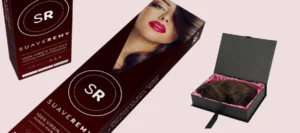Ever wondered why some brands grab attention instantly while others fade into the noise? The secret often lies in a well-crafted PR package. More than just a box of freebies, a PR package is a tactile love letter to your audience—a mix of storytelling, strategy, and sensory delight. Whether you’re launching a product, courting influencers, or reviving a brand, a standout PR package bridges the gap between “Who are you?” and “I need you.” But how do you make yours unforgettable? Let’s cut through the fluff and dive into actionable steps to design PR packages that don’t just arrive—they resonate.
Table of Contents
1. Understanding PR Packages: Beyond the Box
A PR package isn’t a glorified gift basket. It’s a curated experience designed to communicate your brand’s essence, values, and story. Think of it as a handshake, a first impression that can spark partnerships, media coverage, or viral buzz. Successful packages balance practicality (useful items) with emotion (memorable touches). For example, a skincare brand might include a sample serum paired with a handwritten note explaining its eco-friendly sourcing. The goal? Make recipients feel seen, not sold to. Avoid stuffing packages with random swag—every item should serve a purpose, whether it’s showcasing quality, reinforcing your mission, or inviting engagement.
1.1 Why PR Packages Matter in a Digital Age
In a world drowning in emails and ads, physical PR packages cut through the noise. They’re tangible, shareable, and inherently personal. A 2024 study by HubSpot found that 72% of consumers are more likely to remember a brand after interacting with physical marketing materials. Tactile experiences trigger emotional connections. A luxe candle with your logo isn’t just a product—it’s a sensory reminder of your brand every time it’s lit. Plus, unboxing videos on social media offer free, authentic publicity. But remember: Today’s audiences crave authenticity. Overly polished or irrelevant items can backfire. Keep it real, not rigid.
1.2 Common PR Package Myths Debunked
Myth 1: “Bigger budgets = better packages.” Not true. Creativity trumps cost. A local coffee roastery once gained national attention by mailing mini brewing kits with personalized coffee blends to micro-influencers—all under $20 per package. Myth 2: “Only B2C brands need them.” B2B companies thrive here too! A SaaS startup sent branded USB drives preloaded with demo videos and case studies, leading to a 40% uptick in demo requests. Myth 3: “One-size-fits-all works.” Nope. A Gen Z TikToker wants trendy, Instagrammable items; a journalist needs data-driven press kits. Tailor ruthlessly.
1.3 Types of PR Packages: Which Fits Your Goal?
- Launch Packages: Introduce new products with samples, teasers, and behind-the-scenes lore.
- Influencer Kits: Include (trial-sized products) + collaboration pitches (e.g., “Tag us in your review!”).
- Media Kits: Press releases, high-res images, and quick stats for journalists.
- Thank-You Boxes: Reward loyal customers or partners with exclusive merch.
- Crisis Recovery Packages: Rebuild trust post-issue (e.g., a food brand addressing a recall with transparency and items). Match the package type to your objective—awareness, loyalty, or damage control.
2. Planning Your PR Package: Strategy First
Skip the “throw spaghetti at the wall” approach. Start by asking: Who’s receiving this? What action do I want them to take? A beauty blogger might need tutorials to create content; a retail buyer wants sales data. Map out your audience’s pain points and passions. Next, set a budget. Allocate 60% to standout items, 30% to packaging, 10% to shipping. Then, brainstorm themes. A sustainable apparel brand could use recycled materials and plantable seed cards. Finally, timeline it: Allow 2–3 weeks for design, 1 week for assembly, and buffer time for shipping delays. Plan backward from launch dates.
2.1 Defining Your Audience: Who’s Your “Dream Recipient”?
PR packages fail when they’re too broad. Get specific. Create a persona: “Wellness influencers with 10k–100k followers who prioritize clean beauty.” Or “Tech journalists covering AI trends.” Then, stalk—er, research—them. What do they post about? What brands do they love? If your recipient adores minimalist design, avoid neon glitter bombs. For example, Glossier’s pink-heavy packages resonate with its millennial/Gen Z audience, while Apple’s sleek, unmarked boxes intrigue tech elites. Pro tip: Send a pre-package survey to ask preferences (e.g., “Coffee or tea?”). Surprise them, but don’t blindside them.
2.2 Budget Hacks: Maximizing Impact Without Overspending
- Bulk-Buy Samples: Partner with suppliers for discounted mini products.
- DIY Elements: Hand-stamped tags or custom stickers from platforms like Canva add charm for less.
- Repurpose Content: Include QR codes linking to digital press kits instead of printing.
- Collaborate: Team up with complementary brands for cost-sharing (e.g., a fitness app and protein bar company).
- Recycle Packaging: Use biodegradable mailers or upcycled boxes.
One indie bookstore sent “mystery book bundles” wrapped in recycled newspaper with personalized recommendations—costing under $15 each but driving a 25% sales boost. Remember: Thoughtfulness > expense.
2.3 Theme Development: Crafting a Cohesive Story
A theme ties your package together like a book chapter. For a summer product launch, think “Sunset Vibes”: orange tissue paper, citrus-scented samples, and a Spotify playlist link. For a nonprofit, maybe “Behind the Scenes”—include volunteer photos and a handwritten impact story. Go beyond visuals: Incorporate texture (velvet ribbons, embossed logos) and sound (a QR code to a brand jingle). Airbnb’s “Live There” campaign included city guidebooks and local snacks, transporting recipients mentally. Ask: If your package were a movie genre, what would it be? Comedy? Documentary? Align every detail to that mood.
3. Designing the Unboxing Experience: Sensory Magic
Unboxing is the moment of truth. Layer surprises to keep engagement high:
- Outer Packaging: Use bold colors or patterns that stand out on doorsteps.
- Opening Reveal: Tissue paper in your brand hue, stamped with a cheeky message (“Don’t peek—yet!”).
- Item Sequencing: Place smaller items atop (e.g., stickers), then hero products, then a call-to-action card.
- Sensory Triggers: Scented samples, textured fabrics, or a mini playlist link.
Lush Cosmetics nails this with confetti-filled boxes that burst with color and fragrance. Balance “wow” with practicality—avoid items that break or spill.
3.1 Visual Appeal: Balancing Branding and Aesthetics
Your logo shouldn’t scream; it should whisper. Use subtle branding—a debossed logo on a notebook, or a tagline on a tote’s inner seam. Stick to 2–3 brand colors max. For luxury, opt for matte finishes and muted tones; for youth brands, try bright, playful patterns. Include one “hero” item that’s photo-ready, like a neon sign replica or a custom illustration. Example: When Spotify sent “Wrapped” boxes to top users, the vibrant, data-themed graphics went viral. But avoid overdesigning—white space is your friend. Test layouts with a focus group: Does it feel cluttered or curated?
3.2 Functional Add-Ons: Items They’ll Actually Use
PR packages aren’t souvenirs—they’re tools. Choose items that blend utility with brand synergy:
- A reusable tote for a grocery app.
- A branded phone stand for a podcast network.
- A USB drive with exclusive content for a film studio.
Even small touches matter: A bakery included a recipe card and measuring spoons with their cookie mix. Avoid junk (cheap pens, stress balls). Ask: Would I keep this? If yes, it’s a win. Track ROI by coding items (e.g., unique URLs on postcards) to see what drives traffic.
3.3 Sustainability: Eco-Friendly Packaging Ideas
Greenwashing is out; genuine eco-efforts are in. Use:
- Recycled or plant-based materials (e.g., mushroom foam).
- Seed paper tags that grow into herbs.
- Reusable containers (glass jars, cloth wraps).
Patagonia’s Worn Wear initiative, which emphasizes repairing and reusing gear, inspired their PR kits featuring reclaimed fabric patches. Promote your sustainability in the package—”This mailer decomposes in 90 days!”—to align values.
Measuring Success: Did Your PR Package Work?
Track metrics like social media tags, website traffic spikes, or direct feedback. Tools like Google Analytics UTM parameters help trace conversions to specific campaigns.
Why These Links Work:
- HubSpot: Credible source for marketing statistics.
- PRSA: Authority on PR best practices.
- Patagonia: Real-world example of sustainability.
- Canva: Practical tool for DIY design.
- Google Analytics: Essential for tracking ROI.
Conclusion
Creating a successful PR package isn’t about flashy gimmicks or sky-high budgets—it’s about intentionality. By blending strategic planning, sensory storytelling, and audience empathy, you can turn a simple box into a relationship catalyst. Remember: The best packages don’t just land on doorsteps; they linger in minds. Stay authentic, stay curious, and don’t fear imperfection. (A coffee stain on a handwritten note? That’s charm.) Now, go craft something that doesn’t just say, “Notice me,” but whispers, “You get me.” And who knows? Your unboxing video might just break the internet.




